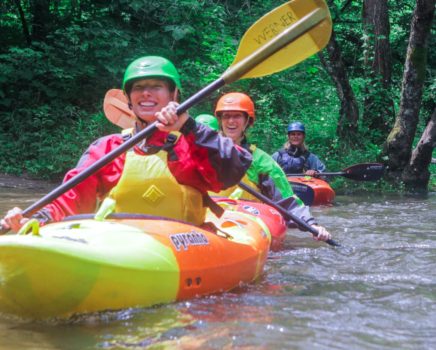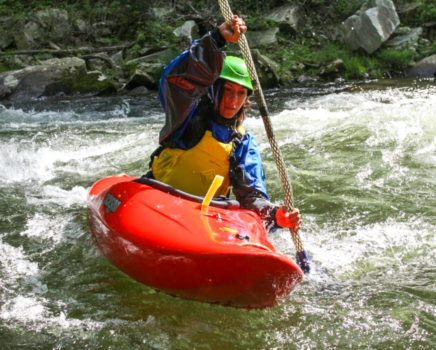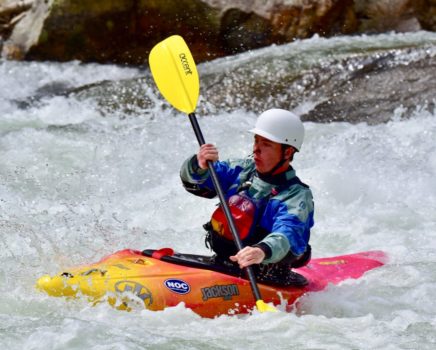
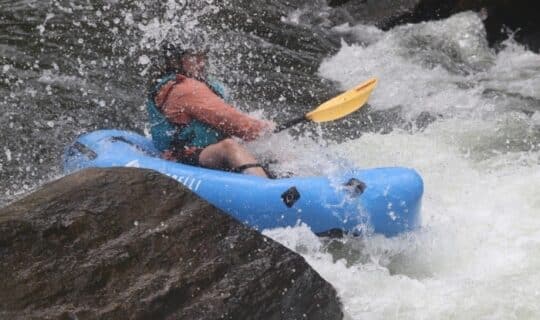
Adventure seekers have taken a growing interest in packrafting, a growing outdoor activity, in recent years. This sport, which has its roots in the Arctic and Alaskan wilderness, has grown to become a worldwide attraction for both nature enthusiasts and thrill-seekers.

We explore the history, nature, equipment needed, how to get started, and some of the world’s top packrafting experiences in this extensive guide.
What Are The Origins Of Packrafting?
The origins of packrafting can be found in the wilderness areas of Alaska and the Arctic, where intrepid travelers and explorers looked for portable, lightweight ways to cross inaccessible rivers. Although these early packrafts were crude—often little more than inflatable rafts—they offered a way to explore places that would not have been accessible otherwise.
As materials and design evolved, more robust and adaptable packrafts were created, piquing the curiosity of outdoor enthusiasts all around the world.
Are you interested in learning how to packraft?
What Is Packrafting?
A type of recreational boating called packrafting mixes elements of hiking and paddling. It involves navigating rivers, streams, and lakes with an inflatable, lightweight raft that usually weighs three to ten pounds.
Packrafts are perfect for reaching distant waterways that are unreachable by conventional watercraft because of their small size and portability. A unique combination of exploration and excitement, packrafting enables travelers to enter pristine wilderness areas and gain a fresh perspective on the natural world.
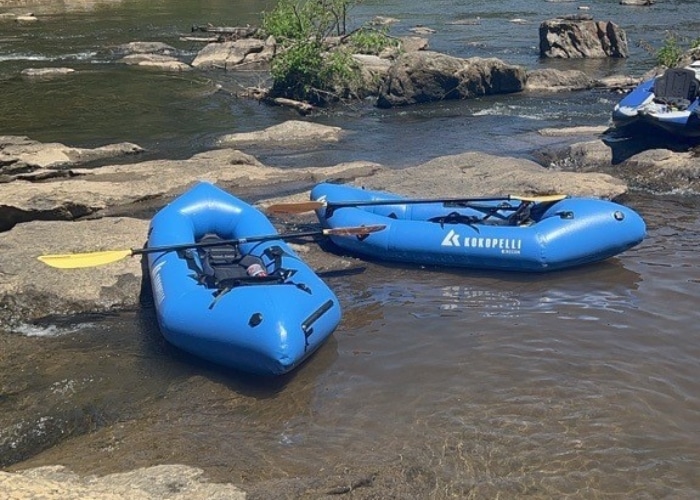
How Can I Start Packrafting?
With the right equipment, even beginners with some basic paddling abilities can begin packrafting. The following are the necessary actions to begin:
- Select the Correct Equipment: Make a wise investment in a high-quality packraft, paddle, PFD, and safety equipment.
- Acquire Fundamental Paddling Knowledge: With classes or guided trips, familiarize yourself with river safety, rescue skills, and paddling techniques.
- Begin Little: Start on gentle, placid rivers to gain experience and confidence before taking on more difficult rivers.
- Take Part in a Community: Make connections with other packrafters via social media groups, internet forums, or local organizations to find new places and gain knowledge from more seasoned paddlers.
Are you interested in learning how to packraft?
What Should I Pack For Packrafting?
Packing the following goods is crucial while getting ready for a packrafting trip:
- Personal Flotation Device (PFD): For boat safety, a well-fitting PFD is essential.
- Helmet: Wear a helmet to shield your head from falling rocks or other debris.
- Paddle: Pick a robust paddle appropriate for the circumstances of the river.
- Dry Bag: Preserve necessities such as clothing, food, and water.
- Safety Equipment: Carry a first aid kit, whistle, and throw bag in case of an emergency.
“I have mastered the art of self-rescue. Unlike whitewater kayaking, when you flip over, you end up out of your boat. I know that I have to keep my composure while swimming, allowing me to locate my boat nearby and climb back into it. This way, I can continue paddling downstream without any further interruption or a stop to dump the water.“ Betsy Bevis, packrafter
How Should I Pack For Packrafting The Chattooga?
When getting ready for a Chattooga River white water rafting excursion, think about bringing the following necessities:
- Appropriate Clothing: Wear clothing that dries quickly and is appropriate for the temperature.
- Sun Protection: To protect yourself from the sun, bring sunglasses, sunscreen, and a wide-brimmed hat.
- Water and Snacks: Consume a lot of water and high-energy snacks to stay hydrated and energized.
- Waterproof Camera: Don’t worry about water damage when you capture the amazing scenery.
- Navigation Tools: To navigate the river and surrounding terrain, carry a map, compass, or GPS device.
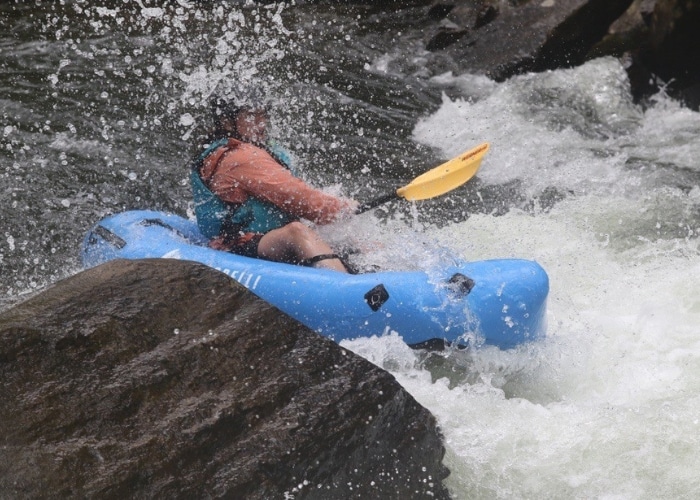
What Should I Pack For A Multi Day Rafting Trip?
For multi-day rafting trips, pack the following essentials:
- Camping Gear: For overnight stays, bring a lightweight tent, a sleeping bag, and a sleeping mat.
- Cooking Equipment: To prepare meals, pack a portable stove, fuel, cookware, and utensils.
- Food and Water: Bring lots of water or a water filtration device, along with light, non-perishable food items.
- Clothing: Bring adaptable apparel, such as rain gear and insulating layers, that may be used in a variety of weather situations.
- Personal Hygiene Items: Remember necessities like soap, toilet paper, and toothpaste to keep yourself clean in the backcountry.
Are you interested in learning how to packraft?
How To Pack For A Grand Canyon Rafting Trip?
When embarking on a Grand Canyon rafting trip, pack the following essentials:
- Permits and Documentation: Make sure you have the necessary identification and permits in order to enter the Grand Canyon.
- Specialized Gear: Depending on the season and water temperature, bring dry suits or wetsuits.
- Emergency Supplies: Since cell coverage can be spotty or nonexistent, bring a satellite phone or other emergency communication equipment.
- Trash Bags: Pack out all rubbish and waste produced throughout the journey in accordance with the Leave No Trace philosophy.
- Respect for Nature: Follow the Leave No Trace philosophy to reduce your environmental impact. You can do this by packing out all of your trash and avoiding needlessly upsetting wildlife.
What Is The Difference Between Packrafting Vs Kayaking?
While both packrafting and kayaking involve paddling on water, there are several key differences between the two:
- Portability: Packrafts are lightweight and convenient to carry on hikes or to carry to far-off places because of their portability. Kayaks, on the other hand, are larger and need to be transported using specific racks or trailers.
- Versatility: Kayaks may not be able to enter shallow or rough waterways, while packrafts can. They are also appropriate for hikes or portages with rafts on backpacking trips. Conversely, kayaks are great in open water and perfect for extended excursions or competitive racing.
- Stability: Compared to kayaks, packrafts are often more stable, which makes them a good option for novices or those looking for a more relaxed paddling experience. Kayaks are preferred for ocean or whitewater kayaking because of their increased speed and maneuverability.
“I recently took an introduction to whitewater kayaking course and I absolutely loved being on the water. However, I was not very comfortable with the idea of attaching myself to a boat and flipping upside down, although, I am a great swimmer! So I decided to buy a packraft instead. At that time, buying a packraft and a paddle seemed more affordable than buying a kayak, paddle, skirt, and a car outfit required for whitewater kayaking. I see myself more likely to roll this boat up and take it to the French Broad or local rivers to paddle. For me it’s more convenient and flexible.” Betsy Bevis, packrafter
What Are Some Of The Best Trips You Can Packraft On?
- Alaska’s Remote Rivers: Packraft down isolated rivers like the Kongakut or the Alatna to experience the untainted wilderness of the state.
- The Grand Canyon: Experience the stunning beauty and exhilarating rapids of the Grand Canyon by starting a multi-day packrafting tour through this legendary location.
- Patagonia’s Glacial Lakes: Packrafting on glacial lakes and rivers encircled by majestic mountains and unspoiled environment is a great way to see the untamed beauty of Patagonia.
- The Yukon River: Go packrafting along the famous Yukon River and experience the serenity and breathtaking natural beauty of Canada’s Yukon Territory.
- The Colorado River through Cataract Canyon: Experience the thrilling rapids of Cataract Canyon on the Colorado River, which meander through breathtaking red rock gorges and demanding whitewater.
A unique combination of excitement, exploration, and closeness to nature is provided by packrafting. Experience the wilderness like never before with packrafting, an exciting outdoor activity that’s perfect for both novices and experienced paddlers seeking their next adventure.
